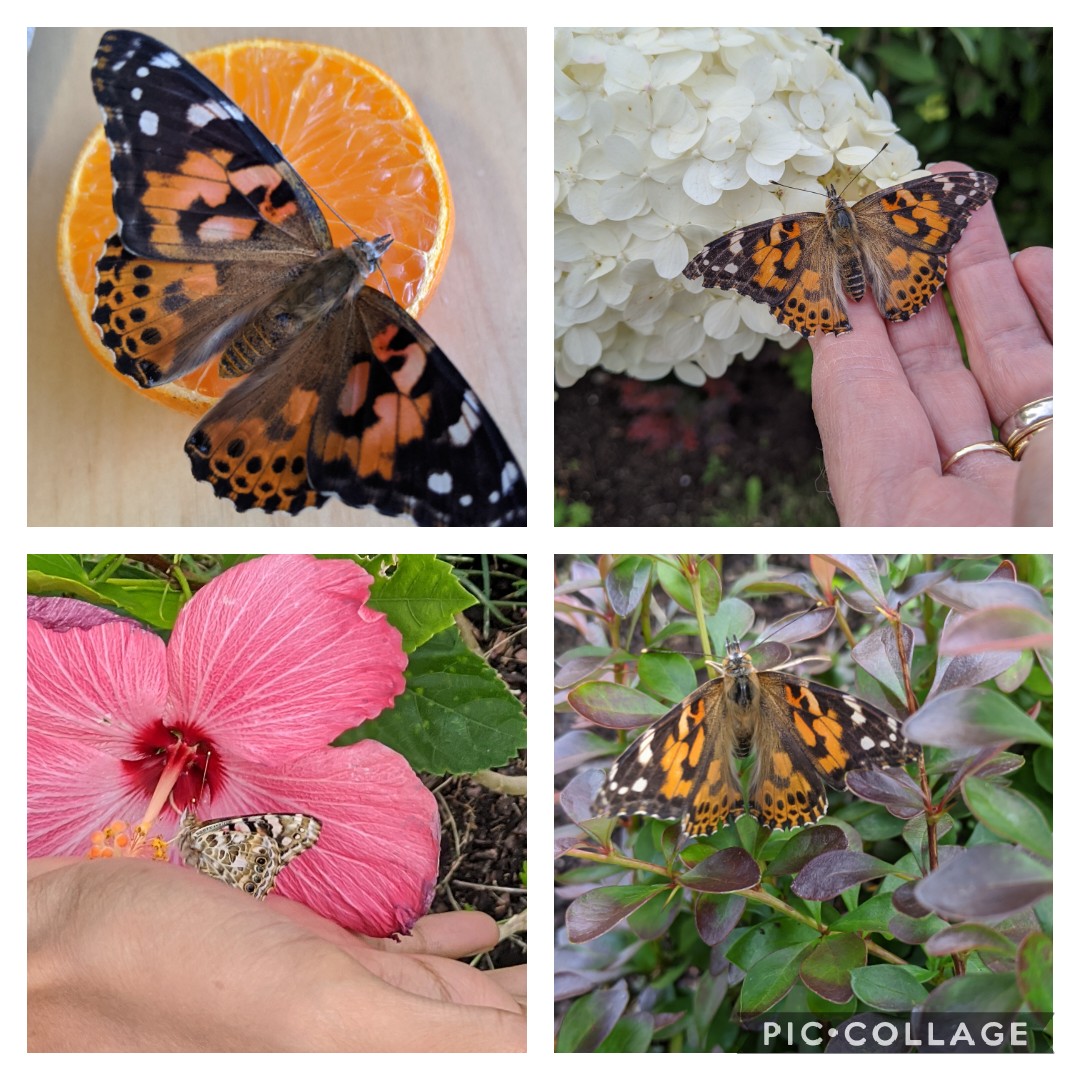Caring for Caterpillars
Written by Julie Bisnath, BSW RSW
Perfect for a home or child care environment, welcoming live caterpillars is easy and engaging. The caterpillars arrive in their own individual cups with their food included. You provide the habitat, which can be as simple as a jar or small mesh laundry hamper. Once the butterflies emerge, they spend a couple of days drying their wings, providing lots of time for up-close observation. On a nice day, release the butterflies in your yard or garden.
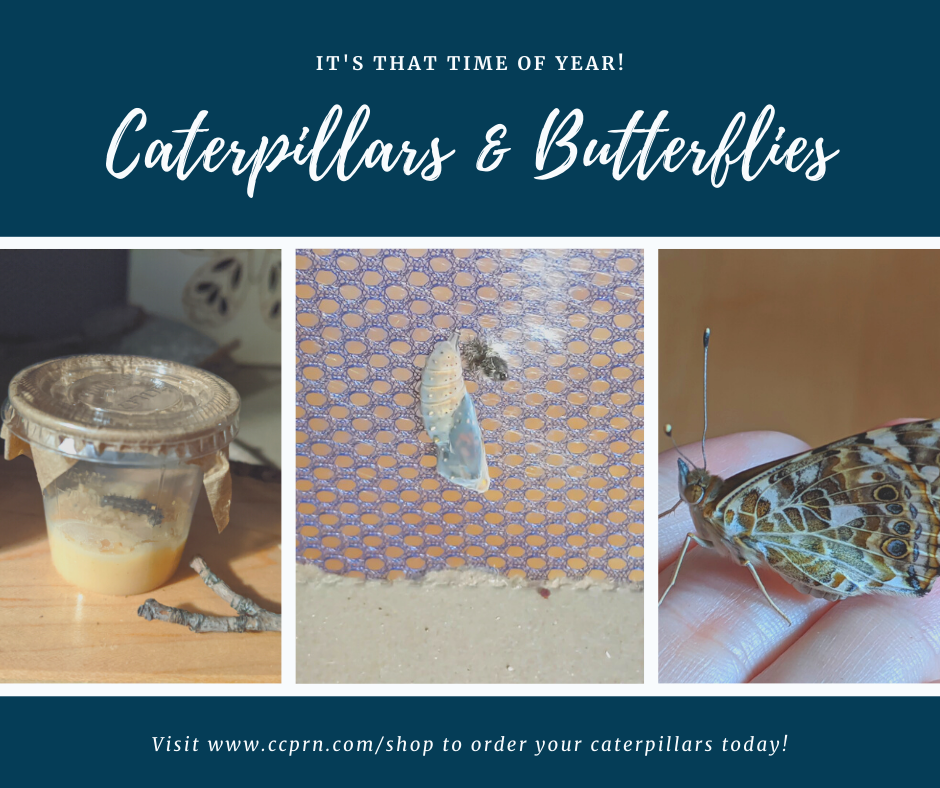
This wonderful experience offers many opportunities to:
- invite children to explore and enjoy caterpillars and butterflies up close
- inspire curiosity and a love for nature
- help children make meaningful connections to the environment & the world around them
- encourage children to wonder and develop their own theories
- examine nature from a scientific perspective
- foster a love for and gentleness toward all living things
Ready to get started?
- Order your Painted Lady caterpillars online at ccprn.com/shop
- 5/$35
- Pick-up your caterpillars in early June 2025 (exact date to be confirmed closer to June, pick-up will be in the evening) in Orleans, Ottawa Central, Barrhaven, or Stittsville.
- Observe and enjoy watching them grow. After 1-2 weeks they will transform into the chrysalis and in 8-10 days will emerge as butterflies.
- Observe and enjoy the butterflies for a few days and then release them outside.
Caring for your caterpillars and butterflies:
5 caterpillars will come in one small container with a cover. In the container with the caterpillars, there is a spoonful of artificial diet (soya flour based).
Leave the container on a shelf away from direct sunlight (and away from pets!) and at room temperature. You can open the cup for a closer look and even very gently hold the caterpillar. The caterpillars grow quickly! Be sure to spend some time enjoying this stage.
The images below feature 1 caterpillar per cup. The 2025 order will be 5 caterpillars per cup.

The caterpillars will manage alone and when they are finished feeding, they will push away the frass (caterpillar poop!), hang upside down and transform into a chrysalis or pupa without your help.
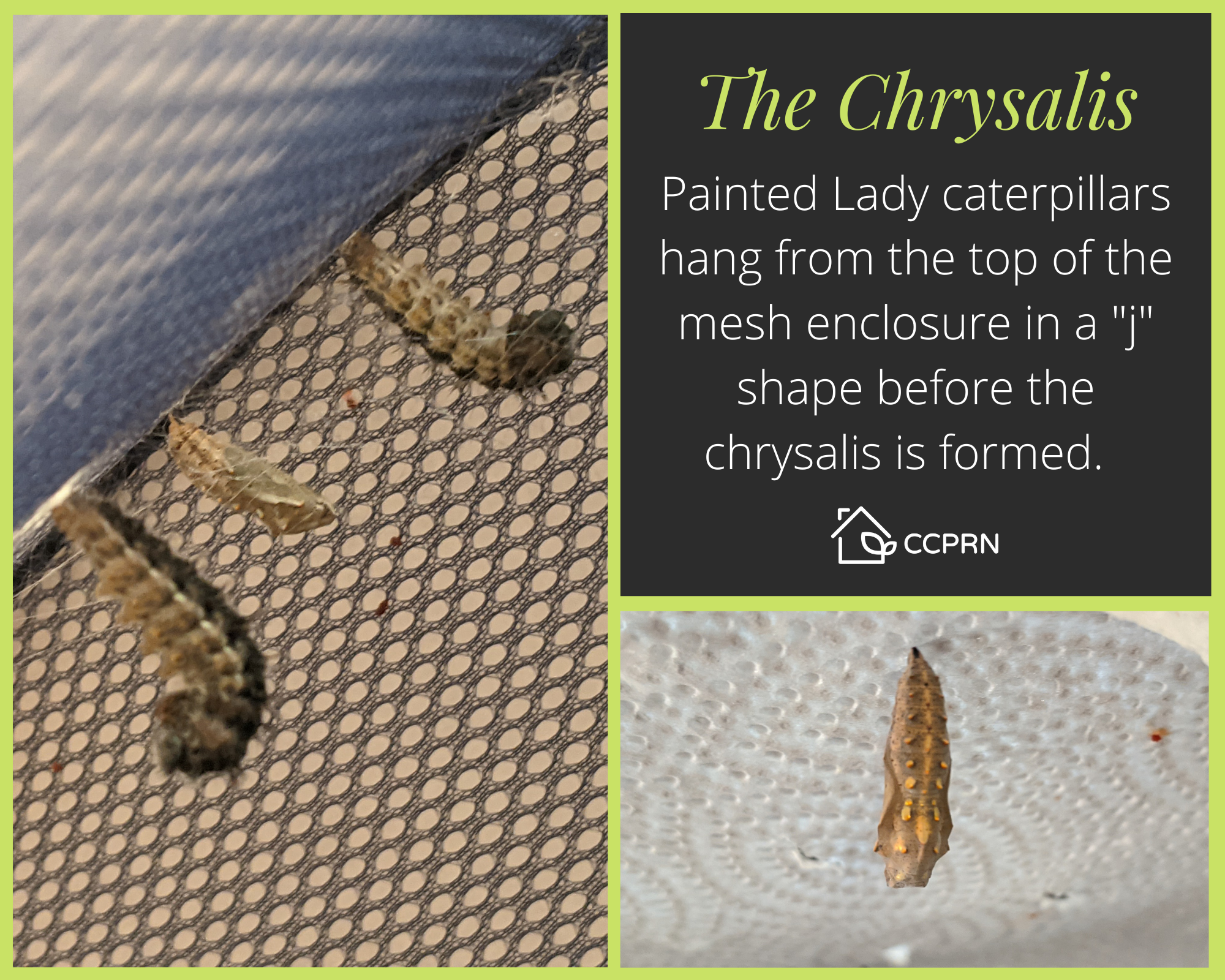
When this happens do not disturb the pupa for 72 hours until it has dried, hardened, and is solid.
Once the pupa is dried and solid, pull the paper towel and chrysalis from the container and pin it into a small flight cage (small mesh hamper—good if you have several caterpillars), about three inches from the bottom. It must be high enough for the butterfly to spread its wings completely and dry them when it emerges. If the pupa is pinned too high in the cage, the butterfly could fall and hurt itself. If the emerging butterfly falls from its chrysalis, it must be able to crawl up again in a hurry to dry its wing, so your flight cage must have a rough wall for it to crawl up. Slippery plastic or glass containers will not do the trick unless you add a wooden branch.
Alternatively, you can place the paper towel and chrysalis on the bottom of a jar or bug container. Include a stick to allow the butterfly to hang from once it emerges. Be sure to cover your jar with some sort of breathable material (mesh, a piece of screen, etc.).

Once the chrysalis becomes translucent, the butterfly will soon emerge. The paper towel and chrysalis shown above were placed at the bottom of the container. When the butterfly emerges it can climb onto the stick and up the branch (not shown) where it will dry its wings.
In all, the pupa stage will last eight to ten days. Once the butterflies emerge, they will spend some time (could be a day or two) drying their wings. Place a slice or two of orange at the bottom of the enclosure for the butterflies to drink. Release the butterflies a day or two later into your yard or garden.
Another option:
When the caterpillars are quite large, open the lids of the tiny cups and place them into a larger jar or enclosure (make sure that the lid is breathable yet secure!). Provide sticks for climbing and when the caterpillars are done eating, they will climb to the top and hang directly from the mesh, or from a larger sheet of paper towel.
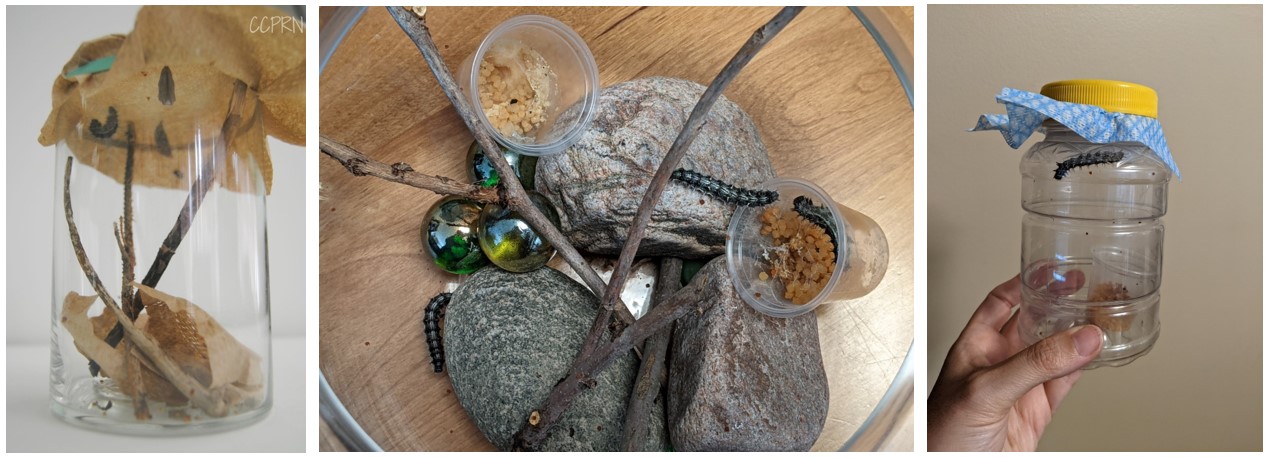
One caterpillar in a small jar or container is fine if you plan to release it as soon as the butterfly emerges. If you have several caterpillars and/or want to observe them for a couple of days as butterflies, then a larger enclosure is better. This could be a mesh laundry hamper, a small aquarium/terrarium, or even a clear plastic bin with a screen or mesh lid. Include sticks, rocks, and greenery so that the butterflies can climb up and spread its wings once emerged. Information on host plants for Painted Lady butterflies is abundant. Search it up online and you might learn that you already have the perfect host plant growing in your garden!
Several butterflies in a large mesh enclosure, soon to be released outside:
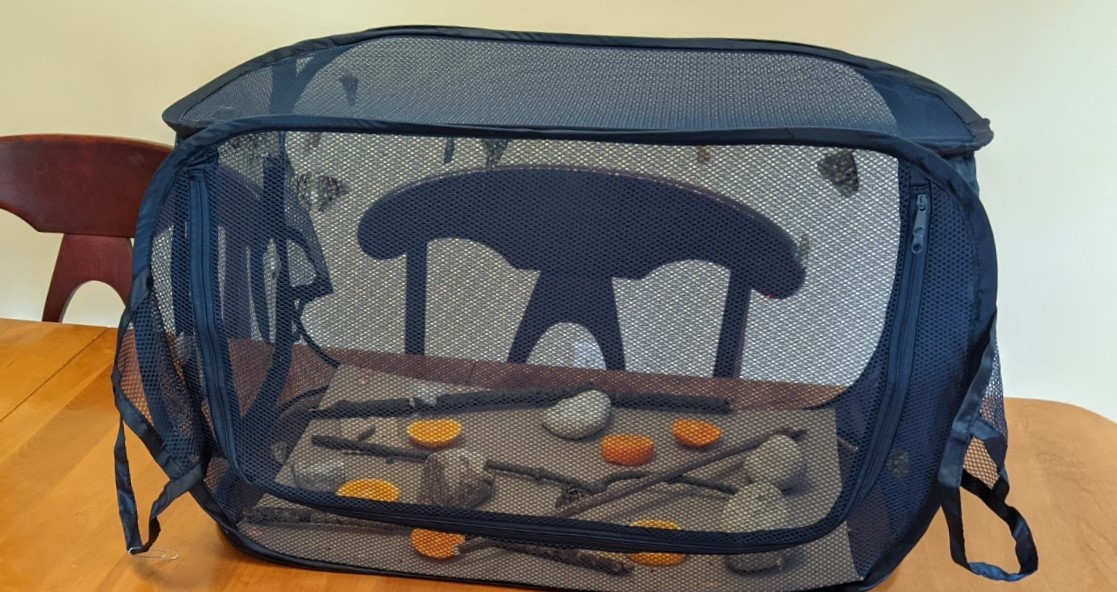
Release the butterflies on a warm day in your yard or at the park:

